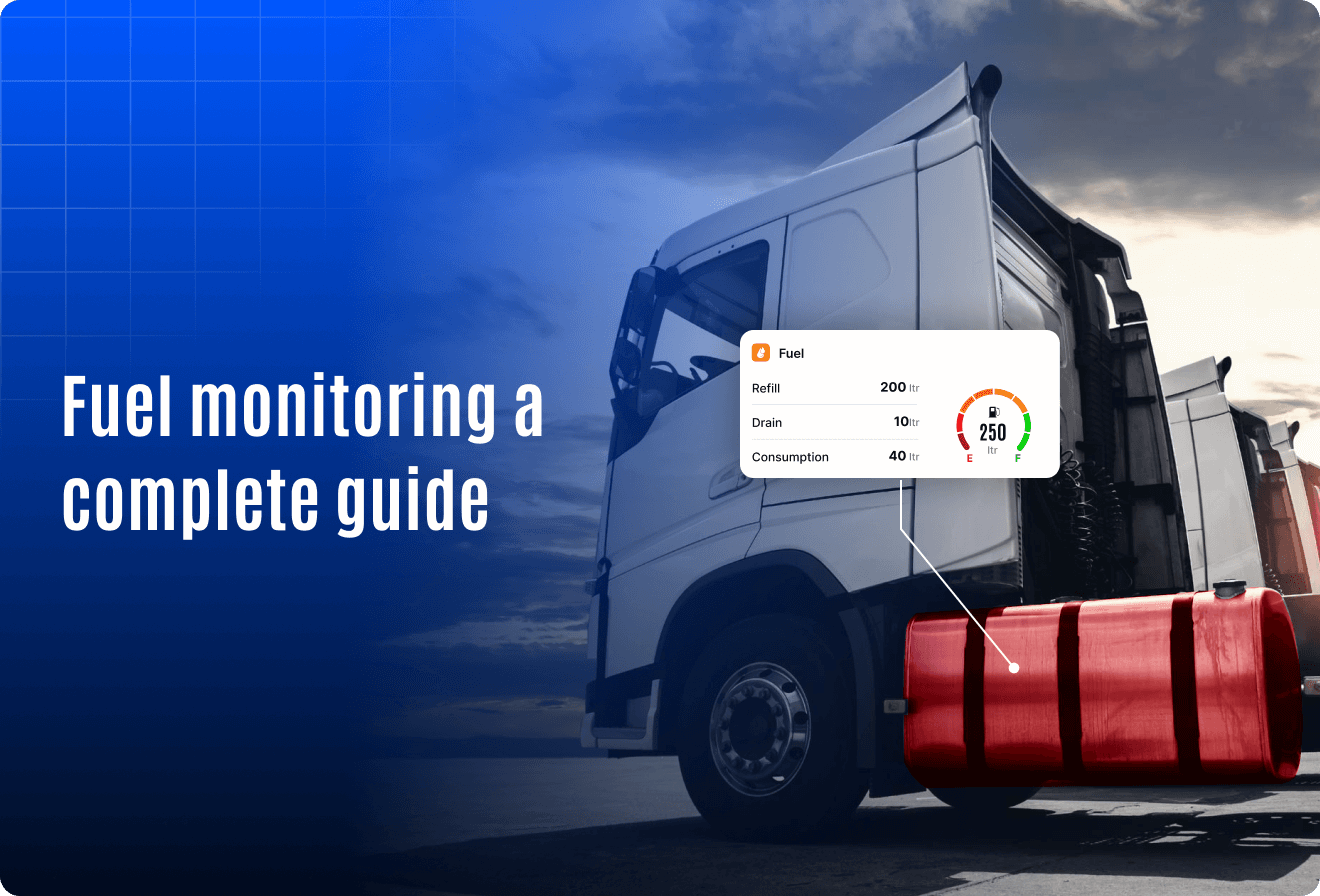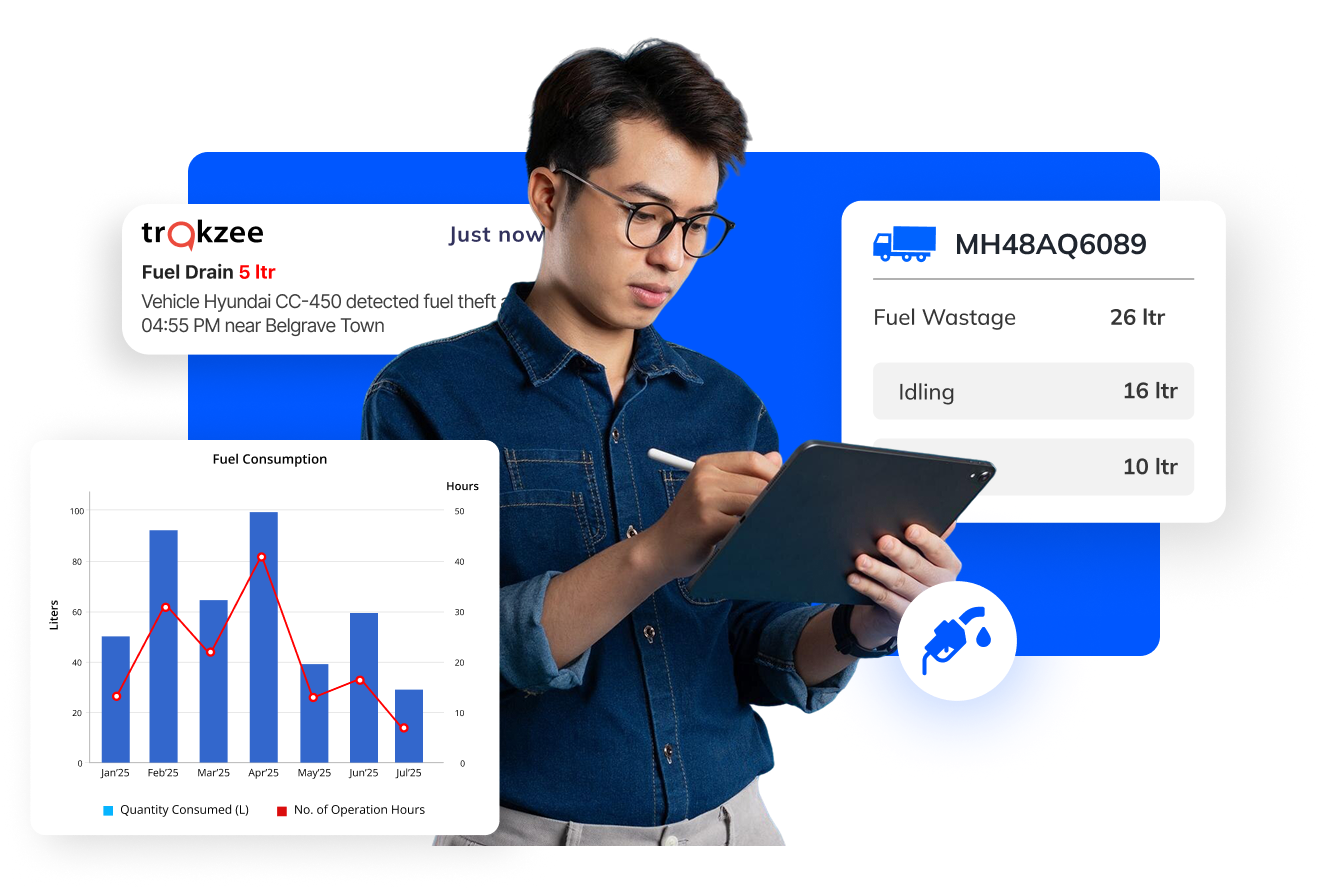Fuel Monitoring in Fleet Software: A Complete Guide for Operators

Fuel eats up a large chunk of your fleet’s budget, but without the right tools, tracking exactly where it’s going becomes guesswork. You refill tanks. You pay the bills. But how much of that fuel is actually used efficiently? What if you could stop theft before it happens, reduce wasteful idling, and identify the drivers or routes silently draining your budget?
Fuel-related losses account for nearly 30% of total operating costs in many fleets. Worse up to 25% of consumption often goes unaccounted for due to theft, misuse, or inefficiencies (Source: Frost & Sullivan, NAFA).
This is where fuel monitoring in fleet software comes in. In this guide, we’ll walk you through how it works, why it’s essential, common mistakes to avoid, and how to get started fast.
What Is Fuel Monitoring in Fleet Management Software?
Fuel monitoring is a feature in fleet software that tracks:
- How much fuel is being used
- When refills happen
- When fuel drains abnormally (theft or leaks)
- Fuel efficiency per trip or driver
It uses GPS, fuel sensors, and smart analytics to help fleet managers understand fuel behavior vehicle by vehicle.
Why Fuel Monitoring Is Crucial for Fleet Operators
Fuel theft alone can cost fleet operators up to $1,000 per vehicle annually, depending on region and fuel prices (Fleet Financials). Combine that with inefficient driving and route planning, and fuel misuse becomes one of the biggest threats to your bottom line.
Studies also show that idling burns up to 1.5 liters of fuel per hour, which can result in losses of $600 to $1,200 per vehicle per year (U.S. Department of Energy).
Telematics-backed fuel monitoring tools have been proven to cut these losses. According to Geotab and Frost & Sullivan, companies see an average 15–25% improvement in fuel efficiency and up to 30% reduction in total fuel-related costs after implementation.
- Reduces fuel theft with live refill and drain alerts
- Improves driving behavior by tracking idling and harsh acceleration
- Boosts fuel efficiency with route and driver-based analytics
- Helps in auditing fuel bills with data-backed reports
According to the National Association of Fleet Administrators (NAFA), fleets that implement fuel monitoring tools report up to 25% reduction in fuel theft and 15–20% improvement in fuel efficiency.
Common Mistakes Fleet Operators Make (And How to Fix Them)
Mistake 1: Relying on Manual Logs
Problem: Paper-based or spreadsheet logs are time consuming and error-prone.
Solution: Automated fuel monitoring systems log refills, drains, and consumption in real time eliminating manual logging and reducing errors.
Mistake 2: No Fuel Theft Detection
Problem: Fuel drains at night or during stops often go unnoticed.
Solution: Fuel monitoring with drain alerts notifies you instantly when fuel drops suddenly indicating possible theft.
Mistake 3: Ignoring Driver Behavior
Problem: Drivers who idle too long or drive aggressively use more fuel.
Solution: Behavior metrics like idling, speeding, and harsh braking combined with fuel data highlight inefficient driving that leads to higher costs.
Mistake 4: Not Tracking Fuel Per Trip or Route
Problem: You can’t improve what you don’t measure.
Solution: The software shows fuel consumed per trip, per vehicle, per route. This lets you plan more efficiently and cut unnecessary trips.
Features to Look for in a Fuel Monitoring System
How to Get Started with Fuel Monitoring
- Choose a GPS tracking system that supports fuel sensors
- Install calibrated fuel sensors or integrate CAN data
- Configure alerts and reports for refills, drains, and thresholds
- Train your team to read and act on insights
Summary: Fuel Monitoring = Profit Protection
Fuel monitoring in fleet software offers more than raw data; it gives your business control.
You can detect fuel theft, minimize waste, and make data-backed decisions that directly impact your bottom line. The best part? It’s fully automated. The system handles the tracking, while you receive real-time alerts, clear dashboards, and detailed fuel reports. According to Frost & Sullivan, businesses using smart fuel monitoring solutions reduce fuel-related expenses by up to 30%.




